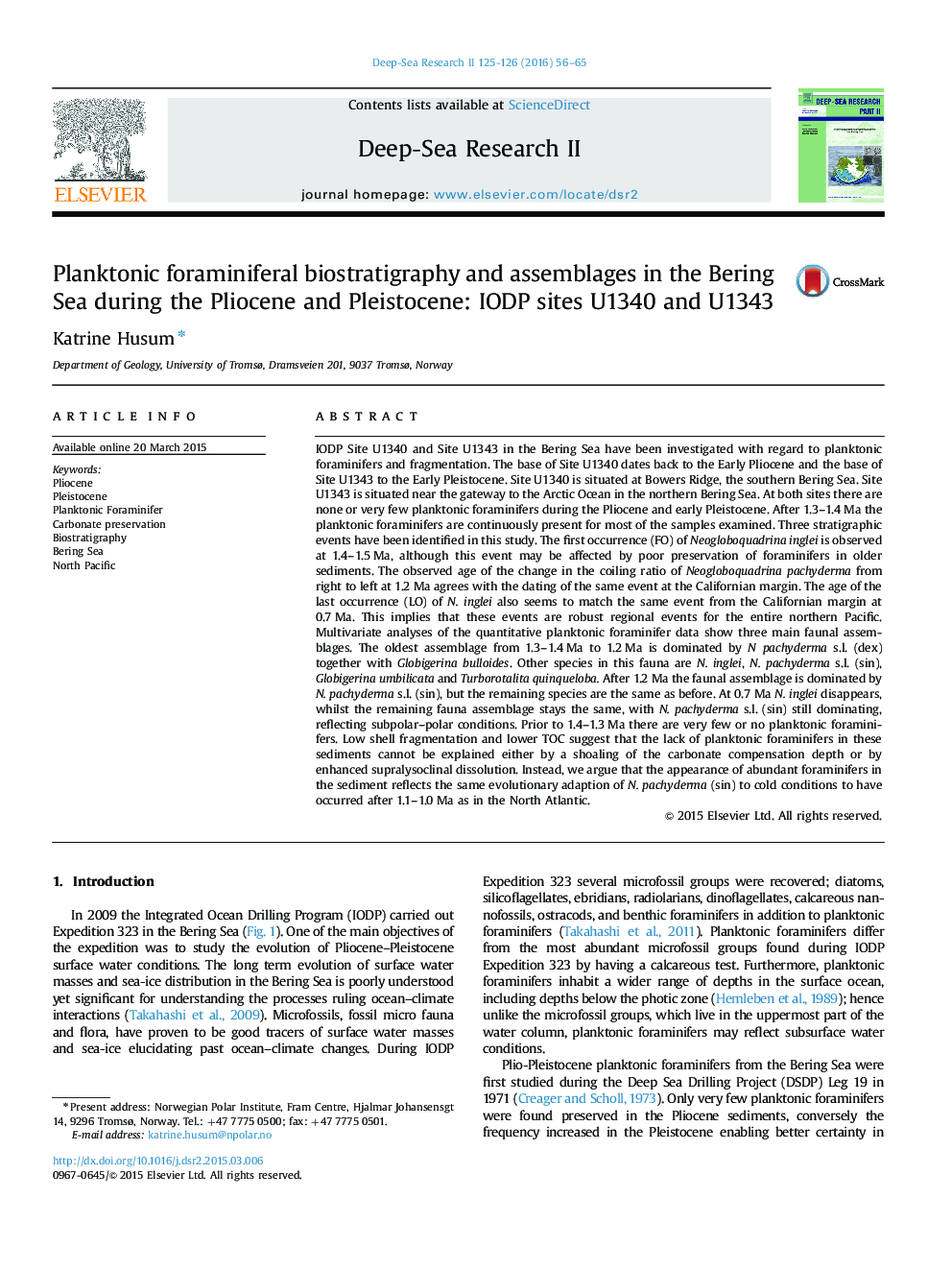| کد مقاله | کد نشریه | سال انتشار | مقاله انگلیسی | نسخه تمام متن |
|---|---|---|---|---|
| 4536104 | 1626416 | 2016 | 10 صفحه PDF | دانلود رایگان |

IODP Site U1340 and Site U1343 in the Bering Sea have been investigated with regard to planktonic foraminifers and fragmentation. The base of Site U1340 dates back to the Early Pliocene and the base of Site U1343 to the Early Pleistocene. Site U1340 is situated at Bowers Ridge, the southern Bering Sea. Site U1343 is situated near the gateway to the Arctic Ocean in the northern Bering Sea. At both sites there are none or very few planktonic foraminifers during the Pliocene and early Pleistocene. After 1.3–1.4 Ma the planktonic foraminifers are continuously present for most of the samples examined. Three stratigraphic events have been identified in this study. The first occurrence (FO) of Neogloboquadrina inglei is observed at 1.4–1.5 Ma, although this event may be affected by poor preservation of foraminifers in older sediments. The observed age of the change in the coiling ratio of Neogloboquadrina pachyderma from right to left at 1.2 Ma agrees with the dating of the same event at the Californian margin. The age of the last occurrence (LO) of N. inglei also seems to match the same event from the Californian margin at 0.7 Ma. This implies that these events are robust regional events for the entire northern Pacific. Multivariate analyses of the quantitative planktonic foraminifer data show three main faunal assemblages. The oldest assemblage from 1.3–1.4 Ma to 1.2 Ma is dominated by N pachyderma s.l. (dex) together with Globigerina bulloides. Other species in this fauna are N. inglei, N. pachyderma s.l. (sin), Globigerina umbilicata and Turborotalita quinqueloba. After 1.2 Ma the faunal assemblage is dominated by N. pachyderma s.l. (sin), but the remaining species are the same as before. At 0.7 Ma N. inglei disappears, whilst the remaining fauna assemblage stays the same, with N. pachyderma s.l. (sin) still dominating, reflecting subpolar–polar conditions. Prior to 1.4–1.3 Ma there are very few or no planktonic foraminifers. Low shell fragmentation and lower TOC suggest that the lack of planktonic foraminifers in these sediments cannot be explained either by a shoaling of the carbonate compensation depth or by enhanced supralysoclinal dissolution. Instead, we argue that the appearance of abundant foraminifers in the sediment reflects the same evolutionary adaption of N. pachyderma (sin) to cold conditions to have occurred after 1.1–1.0 Ma as in the North Atlantic.
Journal: Deep Sea Research Part II: Topical Studies in Oceanography - Volumes 125–126, March–April 2016, Pages 56–65